Choosing a child-free life

We will remember Profiles of local veterans
Trevor’s Take: There is no ‘them’





Choosing a child-free life

We will remember Profiles of local veterans
Trevor’s Take: There is no ‘them’




At Lindsay Ear Clinic, our goal is to provide comprehensive audiological assessments. From the results of these assessments, we will educate, and inform our patients so they can make an informed decision about their hearing needs.
Your story is our priority, we’re here for you!


Choose from one of our three locations in Lindsay, Bobcaygeon or Bancroft
One of our Audiologists will run you through a series of tests and then discuss options to help you return to better
We’re confident we can find the perfect device to suit your needs. BETTER HEARING IN THREE EASY STEPS
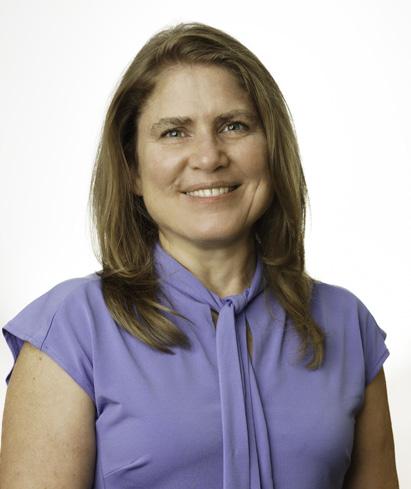




This charming 3-bedroom, 2-bathroom home sits on nearly 2 acres of peaceful countryside, offering the perfect balance of comfort and country living. Inside, you'll find a bright open eat-in kitchen, a cozy family room warmed by a wood stove, and the convenience of main floor laundry. Modern comforts include a propane furnace, central air, 200-amp electrical service, and a drilled well. Step outside and enjoy the beauty of expansive gardens, Orchard, Green House, an established organic vegetable plot, and a cozy fire pit for evenings under the stars. The property also features a large barn/workshop with endless possibilities, a detached carport, a shed for storage, and a private driveway offering plenty of space for vehicles and recreational toys. Located just a short drive from Coboconk, Kirkfield, and Fenelon Falls, you'll have easy access to the Trent-Severn Waterway, Balsam Lake Provincial Park, local shops, schools, and recreational trails. Also an adjacent almost 1 Acre lot is available for sale.











Rebekah McCracken EXECUTIVE EDITOR



There’s a great deal of stigma surrounding a choice to be childless.

Please send editorial inquiries to Roderick Benns at roderick@lindsayadvocate.ca or 705-341-1496.
Please send ad inquiries to Darren Hoiting at 705-991-3188 or darrenhoiting@outlook.com, or to Cara Baycroft at 905-431-4638 lindsayadvocate.ca • @lindsay.advocate

Historian Ian McKechnie profiles local veterans.
Lindsay’s Holsag closes early next year thanks to U.S. tariffs.
Fireside Publishing House is the premier print media company in Kawartha Lakes through its family of magazines and all-local weekly newspaper. We believe that community-based media can bring people together and change lives for the better through the power of storytelling, reflecting local culture, and creating informed and engaged citizens. Our commitment is to deliver high-quality and relevant content that reflects the diverse voices and experiences of our communities. We believe in the transformative power of local media to inspire, educate, and empower.

It was with great delight and a sense of pride that I read the ‘Lunch with Roderick Benns’ feature on his interview with an upcoming local artist. (Carley Reynolds on living with trauma, getting lost in colours, and the healing power of art, October Advocate.)
Having been a Big Brother for more than 25 years, it was nice to see the impact a ‘Big’ can have on a child’s life. What made it even more interesting is that I personally knew her Big Sister, Janice, and believe I met Carley at her place in Inglesby when I dropped off something from the office.
Having run a family-oriented group home for sexually abused girls in Coboconk, I can empathize as to what she must have gone through as a young person. If possible, I would like to reconnect with her, as I feel I can be a great support to her. I live in the Bobcaygeon area and belong to the Bobcaygeon Lions Club. Please keep publishing interesting articles of people’s progress to balance out all the negative things we are exposed to on a daily basis.
— Ted Garrels, Bobcaygeon
I have issues that with Lindsay growing in population we need more options for shopping. Desperately need a Walmart or Costco so we don’t have long drives to Peterborough.
— Deborah Young, Lindsay
We suggest you come to our Small Town, Big Dreams event on Nov. 5 at 6:30 p.m. at Kindred Coffee Bar in downtown Lindsay. The Advocate and Kindred are hosting this free discussion about Lindsay and Kawartha Lakes’ growth. Mayor Doug Elmslie and CAO Ron Taylor will be there – and they will be taking questions from the audience.
— Roderick Benns, publisher
I just finished reading the October Advocate from cover to cover. So many great articles, including the column from Trevor Hutchinson regarding the giving season coming ahead. I’d like to add our organization called 100 Men Kawartha Lakes which has been together since 2018.
As of our upcoming Dec. 4 meeting at the LEX - Lindsay Agricultural Centre we will have donated more than $300,000 to local charities. Our organization is so simple in that each man that joins commits to donating $408 per year. That’s $102 at four meetings. Most guys make every meeting, but many cannot and that’s okay. The money goes directly to three local charities.
Imagine turning your $102 into more than $16,000 (we have over 160 members). All our information is at 100menkawarthalakes.ca.
—
100 Men Who Care, Kawartha Lakes
I’ll buy from anywhere – except
Re: Tariffs force Holsag’s closure in March of next year (Advocate online.)
I am very actively boycotting everything American after their attempts to destroy us economically, and the constant barrage of insults from their leader which, I might add, are also coming from the U.S. populace as well. Not to mention the threats of annexation “by any means possible” to quote their press secretary, Karoline Leavitt.
I have found we make most of the products I use daily right here in Canada, and if it’s not made in Canada I will buy from anywhere but the U.S.A. Nor will I ever set foot in the U.S. again. And I will be doing that for the rest of my life, because I no longer trust the U.S. to have honest dealings with Canada. They seem quite happy to break their agreements when it suits them.
I’m so sorry for the people who are being hurt by this horrible regime. Canadians and Americans on both sides have, and will, suffer. But only one side elected the person who set all this in motion.
— C. Wilson, Lindsay
It is with such optimism and hope that I read Wendy Mackenzie’s letter to the editor in the October issue of the Advocate.
It is Lindsay’s soul that we fell in love with, and it is my mission to keep this beautiful city just as it is in that regard. There will be a lot of newbies moving in, just as we did more than four years ago, and I would really appreciate help in creating that soul amongst the south Asian community who move in.
Generally, we as a culture tend to keep to ourselves for support, but there is plenty of time and opportunity to embrace all cultures in Lindsay.
— Zarina Decambra, Lindsay
Trevor Hutchison’s October Advocate column “Getting ready for giving” names several charitable organizations that combine fundraising with family-friendly, whole some outdoor activities. As a kinesiology graduate, life long physical fitness enthusiast, and former marathon runner, I naturally gravitate toward walk-run events and similar activities.



On Sept. 28, Sturgeon Point Golf Club (SPGC) held its first annual Partner Dogs Canada Charity Golf Classic. Hosted by Golf Professional Doug Gleed, the weather gods cooperated with perfect golfing weather. The funds raised, along with the apres-golf socializing, beverages, and food, were appreciated by all.
I got my “canine fix” too. I met a couple of delightful golden retrievers. They each faithfully serve a citizen who is sight impaired and who is fortunate to have such a highly trained and excellent companion, thanks to the charitable giving at events like these. To any golfer reading this, mark your calendar to participate in the 2026 event. Until then, stop to admire every “working dog” that you encounter.
— Gene Balfour, Fenelon Falls
The Advocate welcomes your letters. We do not publish anonymous letters unless it’s a matter of public importance and/or someone risks harm by writing us. We publish under strict guidelines & only if we can verify the person’s identity. Keep your letters to 200 words or less. Simply email roderick@lindsayadvocate.ca.


Won’t you join our supporter’s list?
The Advocate and Kawartha Lakes Weekly are your 100% local print media choices based in Kawartha Lakes. Visit our website and choose Support Us, or contact 705-341-1496 or roderick@ lindsayadvocate.ca. We thank the following people for their support:
Al Kingdon, Anne Melanson, April Scott, Audrey Burrows, Barb Taylor, Bill & Heather Peter, Bob & Carol Barkwell, Bruce & Debbie Peck, Cam Finley, Carol Bryans, Carol & Brian Kelsey, Catherine Hennings, Chris Yourkin, Christine Wilson, Colleen Newson, Cordula Winkelaar, D Ann Ostafichuk, Dale Urekar, David & Margaret Robertson, David Holloway, David MacMillan, Deborah Smith, Doreen Amos, Don Sangster, Donna Gushue & Jim Buchanan, Drew Davison, Edith Wood, Edna Calhoun, Elaine Heyes, Elizabeth Anne Patterson, Elke Danziger, Ellen Roberts, Gail Motzok, Garth & Marian Mackay, George Meyer, Glenda Morris, Grace King, Hannah Marnoch, Heather Muir, Hilary Grice, Jack Kyle, Jamie Anderson, Jane Porter, Jane Walling, Janet Smith, Jean Wood, Jeremy Kraemer, Jim Buchanan, Joan Shippel, Joanne Young, John & Elizabeth Gundy, John & Pauline Hunter, Joyce Dunning, Kevlyn Given, Laurie Jones, Lauren Drew, Lee Steeves, Leslie King, Linda Friend, Lorna Green, Lynda Palmer, Marci Stainton, Margaret Anthony, Maria Bennett, Marie Geelen, Marie-France Leclerc, Marnie Nelles, Maureen Kalmykow, Maurice & Marie Jackson, Mehran Qaaboos, Mike & Cathy Puffer, Nanci Byer, Neil Campbell, Nelson Gingrich, Nora Steffler, Norma Downes, Norman & Molly FeldmanSwan, Patricia Apac, Pamela Burtt, Paul Skipworth, Peter & Kathy Anderson, Peter & Sandra MacArthur, Ray & Lorna Smith, Ron & Claudie Chartrand, Ross & Susan Beattie, Sandra Scott, Sharon Tracy, Shirley Harnden, Susan Ferguson, Susan Gleeson, Susan Stitt, Tegan Osmond, Vickie Schuett, Viona Smith, Wanda Percival, Wayne & Cathy Alldred, Wayne Alldred, William Steffler, Wayne & Wendy Brumwell, Zita Devan




Solicitors, Notaries






By Roderick Benns Publisher
Portugal Cove South, at the southern tip of Newfoundland’s Avalon Peninsula, feels both barren and beautiful. Barren, because widely spaced jellybean houses belie the grey hair and darkening economic skies for this waning village of 86. Beautiful, because bright benches facing the cold North Atlantic on a sunny October day remind us of the authority and privilege of nature.
There are no bikes left on lawns or the sound of children laughing because there are no children at all. And with a median age of 62, a full 20 years older than the national average, it is at a demographic point of no return.
There are no bikes left on lawns or the sound of children laughing because there are no children at all.
The general store is the only outward sign of commerce in town. Rebekah and I chat with the proprietor, who remembers the day the fish plant closed in nearby Trepassey, where virtually everyone worked. Six hundred people were thrown into economic upheaval in 1990 – a bellwether that signalled the start of the cod moratorium a year later and far worse things to come.
From her store countertop I pick up a copy of The Shoreline News, still kicking as a weekly print newspaper and covering most of the Avalon Peninsula. With more than 13,000 copies in print for pick-up at dozens of locations, it is the largest circulation newspaper in Newfoundland and Labrador.
Given that even the province’s paper of record – The St. John’s Telegram – has moved to only once a week in print, The Shoreline’s local journalism effort is that much more important.
Two and a half hours north in Portugal Cove – St. Philips (yes, another village with almost the same name) one can grab a ferry across the tickle to get to get to nearby Bell Island.
With its dramatic cathedral-like cliffs, Bell Island used to be one of the most important iron ore operations in the world. The mining stopped in the late 1960s though, reducing its population from 15,000 to barely 2,000 today (which includes 200 children.)
Despite the dramatic loss of people, it feels like the island community has adapted better than Portugal Cove South, parlaying its former mining operation and other distinct geographic features into a viable tourism enterprise. However, about 35 per cent of the people of Bell Island now must take the 20-minute ferry ride to mainland Newfoundland each day to work.
This corner of the peninsula is served by a monthly print newspaper called The Northeast Avalon Times. With about 3,500 copies in print each month it does its best to unite the three small communities on Bell Island with those small places just across the watery expanse. It was clear how much the newspaper was appreciated by all those we spoke with.
In a province where no daily newspaper exists in print – and where there are only four or five weeklies across the entire landmass – keepers of the record have become diminished, but no less integral.
It is painful to realize that at a time in our history when information has never been more plentiful, trustworthy local journalism has never been more scarce. For my colleagues, near and far, I know your efforts are appreciated by those you serve.

Kawartha Lakes Food Source
Every day, I see firsthand the incredible difference our donors’ generosity makes. But today, I want to share these stories with you so you can truly understand the impact of your support.
The need in our community is growing at an alarming rate. Each month, more than 1,300 people turn to our local food banks for help because they can no longer keep up with the rising cost of living in Kawartha Lakes. As children return to school, parents are facing additional costs for school supplies and lunches, stretching their already limited budgets even further.
When I think about kids going to school hungry, or parents struggling to provide a simple breakfast before class, I’m reminded of why our work is so vital. Kawartha Lakes Food Source (KLFS) plays a crucial role in bridging the gap between a child’s hunger and their ability to succeed in school. The fresh produce, nutritious meals, and essential groceries we distribute? They’re all made possible by our generous community of donors and volunteers.
I’ve witnessed the power of a simple bag of groceries to bring tears of joy and relief to families who are just trying to get by. One of our new clients recently shared how receiving fresh fruit for the first time in months brought them immense happiness.
These are the realities we face every day. And that’s why I’m sharing these stories with you.
We support 25 local schools through our Grab & Grow program, providing milk and fresh fruit to students in need.
Our hunger count reveals two groups who are increasingly relying on food security programs. First, there are working families, single or two-parent households with children, who often juggle multiple low-wage jobs. The working poor now make up 20 per cent of our client base.
Second, there’s a significant rise in the number of seniors seeking support. Their numbers have grown by 13 per cent, many of whom didn’t anticipate the high costs of living and medical expenses.
Nearly all of our food banks in Kawartha Lakes are run by volunteers. Kawartha Lakes Food Source is proud to be the umbrella organization that supports nine member agencies and more than 22 partners, ensuring a steady and reliable flow of food to those who need it most.
I want to take a moment to thank our community partners, volunteers, businesses, and individual donors for your unwavering support. Your kindness is making a real difference in the lives of those who are struggling. Together, we are showing up for our neighbors, friends, and family members who need us most.
Let’s continue working together to ensure that every child, senior, and individual in our community has access to the nutritious food they need to thrive.
If you’re looking for the best way to support us right now, visit kawarthalakesfoodsource.com and choose Donate Now. Your gift really makes a difference.


Kathy Ridout Executive Director, Kawartha Lakes Food Source













The Advocate recently hosted a panel discussion on the importance of local journalism.
Moderated (and generously sponsored) by Laurie Dillon-Schalk of the Kawartha Community Foundation, the event brought together more than 50 engaged community members who filled Launch Kawartha with thoughtful questions and lively conversation.
Five Advocate writers — Publisher Roderick Benns, Contributing Editor Nancy Payne, Reporter Robyn Best, Historian Ian McKechnie, and Writer-atLarge Geoff Coleman, all shared their experiences covering Kawartha Lakes. The thoughtful audience reminded us exactly why community journalism matters.
Catering was provided by the Olympia Restaurant.

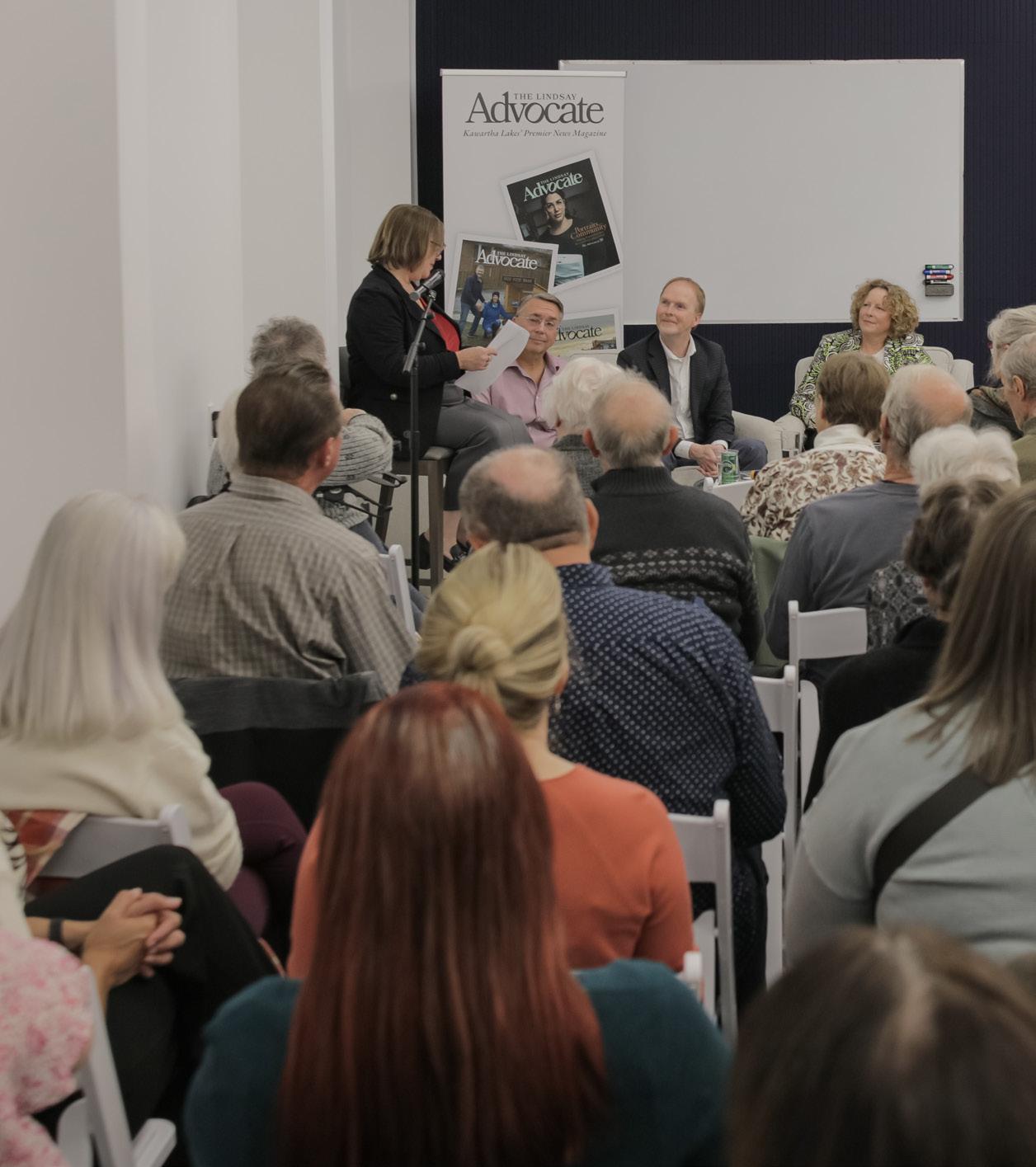
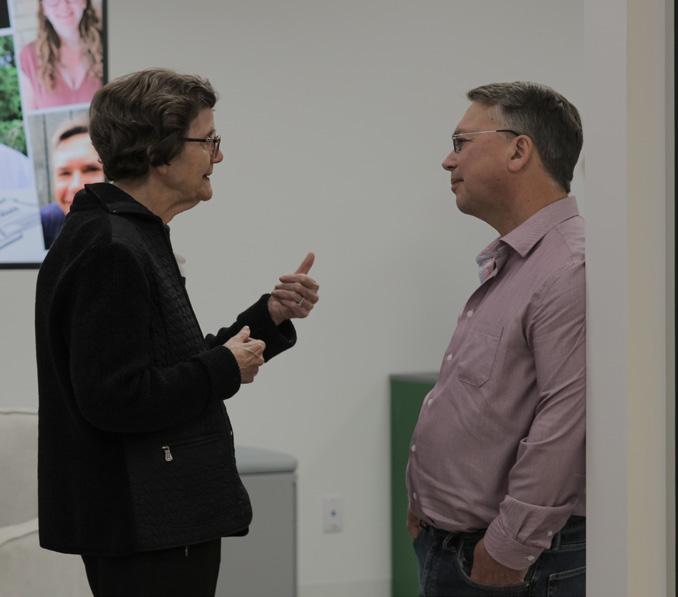
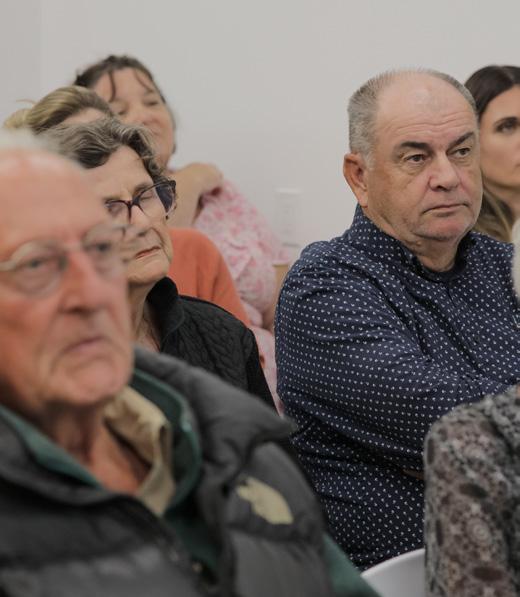

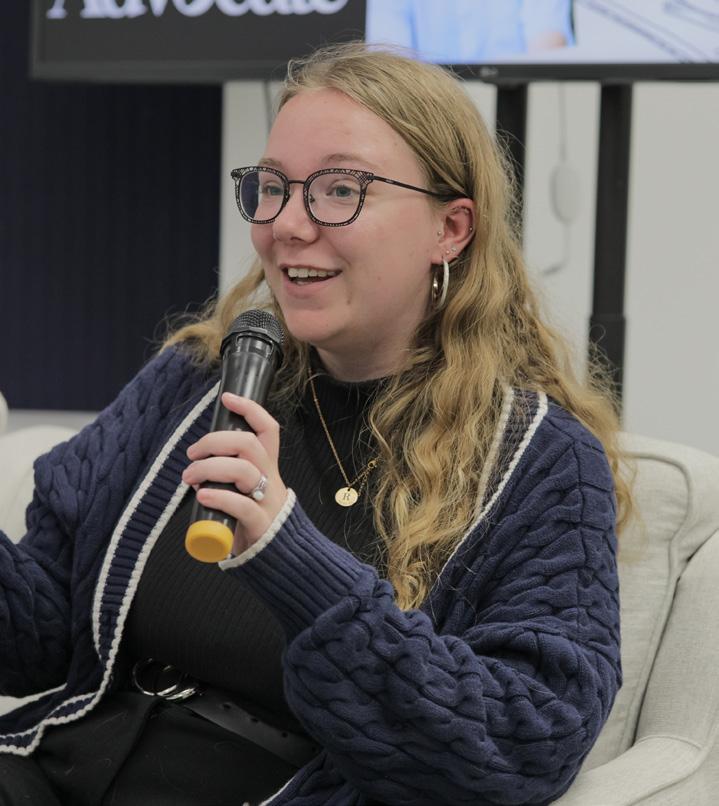




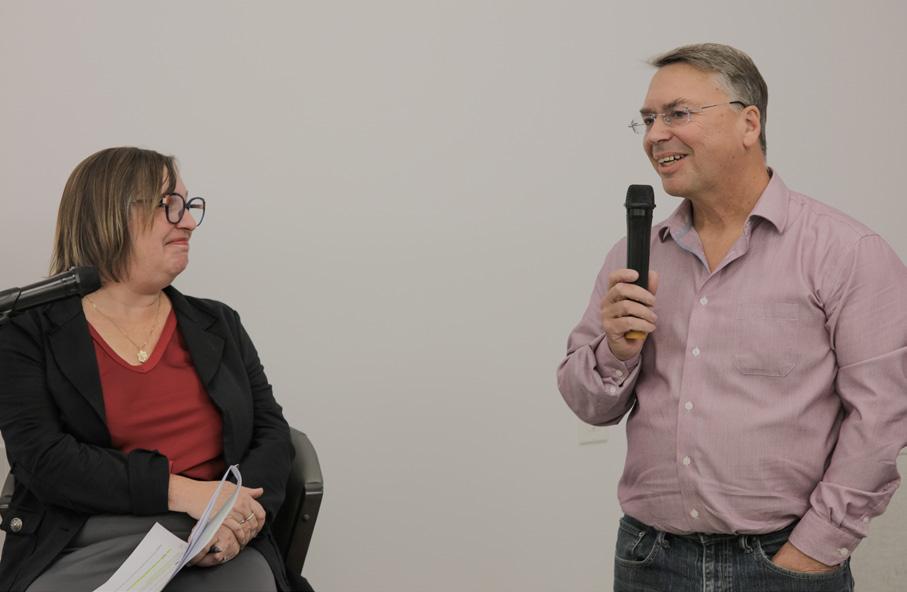

By Ian McKechnie
Since 2023, the Advocate has been profiling local veterans in the pages of its November issue. These stories bring home the events of conflicts past (and more recent), reminding us that remembrance is not primarily about exhibiting military memorabilia or writing historical analyses of battlefield strategy. All those things point us back to what is at the heart of remembrance: the lives of quite ordinary people who were forever changed by their participation in the theatre of war.
This year, the Advocate highlights the service of eight individuals who at one point or another made their home in Kawartha Lakes – before and after their service in the First World War, the Second World War, and in deployments of more recent times.
We will remember them, living and deceased.



First World War
Joseph Edward Bryans was born on Oct. 29, 1894 (though some sources place the date in 1889), in Carden Township, and was living in the village of Victoria Road at the time of enlistment. A labourer by trade, he signed up for service relatively late in the First World War – Jan. 7, 1918 – but would serve in a variety of capacities over the course of the year. He began his time in the Canadian Expeditionary Force with the 1st Depot Battalion of the Eastern Ontario Regiment, based in Kingston, Ontario (depot battalions trained recruits prior to mobilization), and headed overseas in July of 1918. Upon arrival in the United Kingdom, he was posted to the 2nd Battalion, C.E.F., and saw action in France later that summer. On Sept. 28, 1918, while serving near Arras, Bryans was shot in the right thigh, resulting in a fracture of the femur. He was discharged from service in 1919, and returned to Canada, where he later worked in the Kirkfield stone quarry. Bryans died in 1972.

First World War
Winnifred Ethel Hardy was born on June 16, 1889 (though she gave 1892 as a birth year when filling out her attestation papers). The second oldest in a family of seven children, she was raised in the tiny hamlet of Peniel, located a little over five kilometres south of Woodville. In her mid-20s, Hardy headed to Lindsay, where she trained as a nurse at Ross Memorial Hospital, graduating on June 9, 1916. The First World War was in full swing by this point, and women aged 21 through 38 were signing up to serve as nursing sisters in the Canadian Army Medical Corps. Hardy was among them, and was assigned to the No. 1 Canadian General Hospital, in France. Two years later, this hospital was the victim of an air raid in which some 70 Canadians were killed. “In all my experiences of war surgery, I have never seen such wounds,” wrote a terrified Hardy. “However, it’s all over now and one tries hard to forget it.” She later relocated to Pelham, Ontario, and died there in 1978.

First World War
John James Montague was born in Jarvis, Ontario, on Dec. 13, 1894. A stationary engineer by trade, Montague enlisted in the Canadian Expeditionary Force on his 21st birthday, filling out his attestation papers in London, Ontario. Not quite two years later, Montague was serving with the 14th Battalion, C.E.F., at Vimy Ridge when a shell exploded adjacent to him. Shrapnel entered both of his feet and legs; while he was able to walk to a nearby dressing station, his injuries were apparently severe enough that amputation was required. Upon his return to Canada, Montague was admitted to St. Michael’s Hospital in Toronto. Here he would meet a nurse named Emily Wright, who would later become his wife. Shortly after Montague returned to Canada, a photograph was taken of him being pushed in a wheelchair through a fair (likely the CNE), with the caption reading: “Someone had a kind thought and gave the legless heroes who were wheeled along the midway two huge Teddy bears.” Montague, fitted with prosthetic legs, eventually settled in Woodville, Ontario, where he died in 1950.
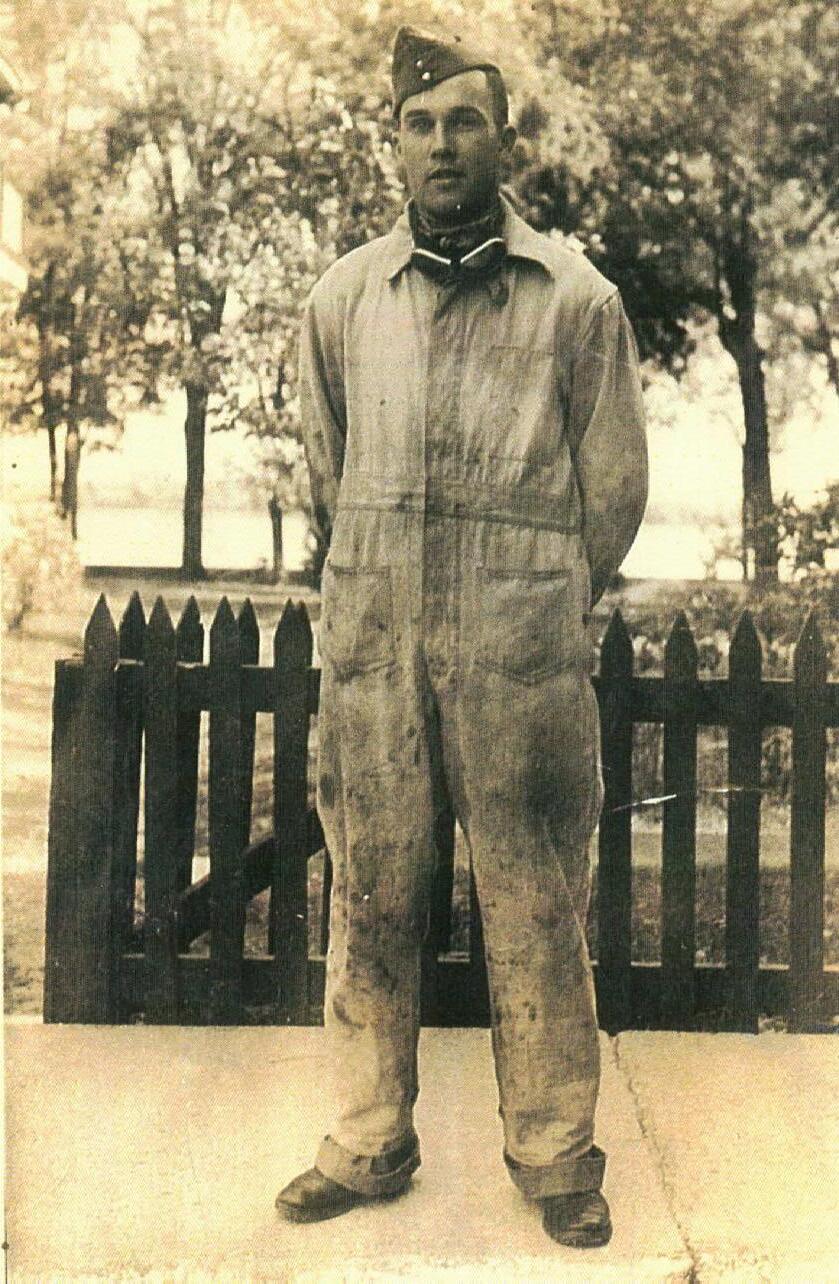
Second World War
More than 45,000 Canadians died during the Second World War. Among them was Alexander James Balfour, who was born in 1920 and grew up in Lindsay. Here he attended Lindsay Collegiate Institute and with his family worshipped at the former William Street Baptist Church. Trained as a truck driver, Balfour enlisted in the Royal Canadian Dragoons in 1940, later serving with the 18th Armoured Car Regiment of the 12th Manitoba Dragoons. He proceeded overseas in 1941, seeing action all over Europe – starting in Italy, later relocating to England, and eventually being deployed to the front lines of Belgium, France, and the Netherlands. On April 19, 1945, Balfour was travelling in a Staghound armoured car near the Kusten Canal in Germany when the vehicle ran over a mine consisting of some 500 pounds of explosives. The car was destroyed, with Balfour and his fellow soldiers killed instantly. Balfour was interred at the Holten Canadian War Cemetery in the Netherlands.

Born in Toronto, Howard Neale enlisted in the 1st Canadian Paratroop Battalion in 1943. The following year, he found himself on a plane crossing the English Channel on the night of June 6 – D-Day. Receiving orders to jump, Neale disappeared into the night sky, descending into unknown territory below. Although their parachutes enabled Neale and his comrades to land safely enough in the water and make their way towards land, their freedom was short-lived. They had inadvertently crossed into enemy territory, and Neale recalled being awoken at gunpoint and taken away to a German prisoner of war camp in Poland known as Stalag 4B. He remained there until the camp was liberated in 1945. Following the war, Neale resumed his career in banking and retired to Fenelon Falls in 1985. In 1986, Neale encountered Bob Milne, a fellow paratrooper, in his adopted hometown. Milne had assumed Neale died during the war and was delighted to reconnect. Neale died in 2016, in his 93rd year.

A graduate of I.E. Weldon Secondary School and Carleton University, Andrew Hill has been serving with the Canadian Armed Forces since 2019. As an electronic-optronic technician, he is responsible for maintaining and repairing systems designed to accurately discharge ammunition from various types of weaponry. Based in Petawawa, Master Corporal Hill has since June of 2025 been stationed in Latvia with the Royal Canadian Electrical and Mechanical Engineers, where he repairs weaponry used in the war in Ukraine. Having worked in the oil field and for a geology company in the Canadian north, Hill has always been ready for new challenges – not least on active service with the CAF.


The brother of Advocate publisher Roderick Benns, Major Brad Benns grew up in Lindsay and graduated from Trent University. He joined the Canadian Armed Forces in 2004, initially serving as an infantry officer with the Hastings & Prince Edward Regiment, which is based in Belleville, Ontario. In 2008, Benns moved over to the Regular Forces and Intelligence Corps – a role that has seen him travel around the globe. In 2011, he served in Afghanistan, providing intelligence in the fight against counter-improvised explosive devices. “Attempting to define and defeat enemy networks, we helped target and eliminate leadership, manufacturing sites, and the influences they had on local populations,” Benns explains. From 2019 through 2022, Benns was stationed in Fort Belvoir, Virginia, where he worked to facilitate and integrate Canadian and American intelligence efforts in multiple operations around the world. For the past few years, Benns has been serving as the intelligence lead for the Canadian Manoeuvre Training Centre in Wainwright, Alberta. In this capacity, he has trained Canadian soldiers stationed in Latvia as part of Canada’s deployment in eastern Europe.

A native of Beaverton, Robert McDougall began his training with the Canadian Armed Forces in 1983, later being qualified to work as a medical assistant. A few years later, he was deployed to Golan Heights, in the Middle East, where Canadian peacekeepers were stationed. By the late 1980s, tensions were flaring up in Iran and Iraq, precipitating the Gulf War. McDougall and some 4,000 Canadians were called upon to serve in this conflict; McDougall and his fellow medical staff served at a field hospital in Saudi Arabia. “They came in with a variety of injuries in a variety of states,” he would later recall of the prisoners-of-war who came under his care. Following his service in the Persian Gulf, McDougall returned to Canada and worked for several more years at Canadian Forces Base Petawawa. He retired from the Canadian Armed Forces in 2008 and worked for more than a decade in the emergency room at Ross Memorial Hospital – which, incidentally, had played such a key role in training Canadian Army Medical Corps personnel during the First World War.
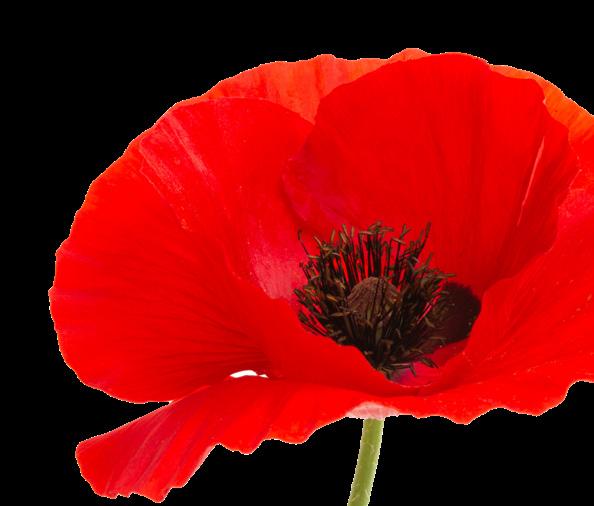










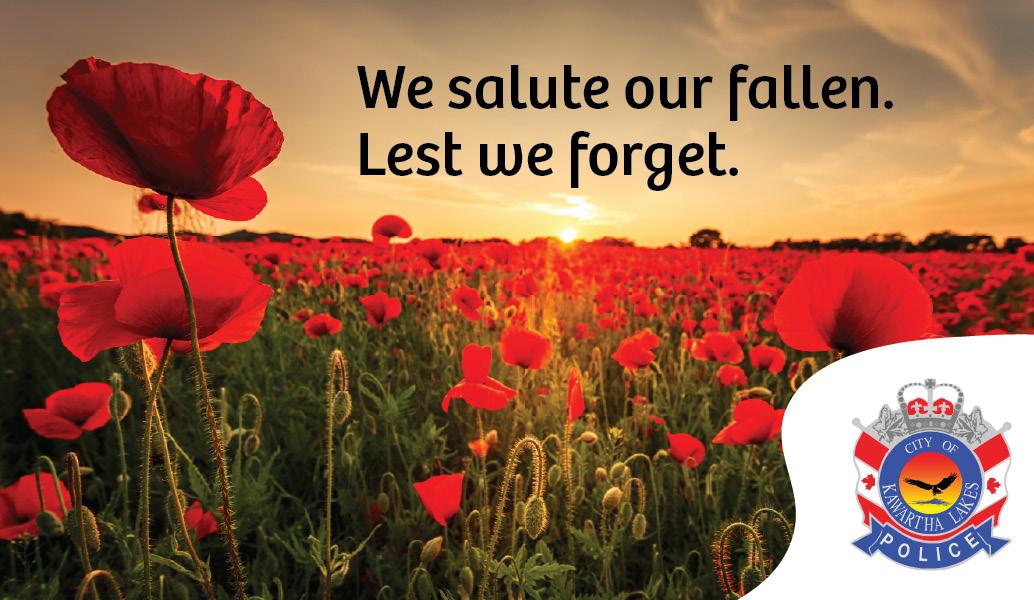

By Golda Greenspoon
You and your partner have decided kids are not in your future.
But a dog definitely is.
You’re not alone. There’s no shortage of research showing that childless couples are more likely to also be pet owners, than those with children. Heck maybe you even refer to your special pal as your “fur baby” and include its name on your outgoing voice mail. No judgement, here. I, too, own a dog and have been known to refer to him as though he had two, not four, legs.
But should you and that special someone (your partner, not the dog) decide to end the relationship, who gets the dog? Is Mr. Tibbles subject to similar rules governing human loved ones? Not exactly.
When it comes to the law, pets are considered – (deep breath here, die-hard dog owners) “property.”
Some lawyers may even refuse to include the dog when creating those documents for you and your ex. When lawyers are willing to – as I recently did for two separating parties – it goes under the term “chattels” – legalese for “property.”
If the dispute makes it to the courtroom, there’s no guarantee the judge will offer a ruling or a custodial split between partners, either. The judge will, usually, award full guardianship –or ownership – to one person. Think of it as a table, not a dog. You can’t really share custody of a table.
Think of it as a table, not a dog. You can’t really share custody of a table.
A judge willing to rule, will weigh several factors – some of which could trump one partner’s argument that they brought the dog into the relationship and therefore should be its rightful and sole owner. Rather, it could come down to who walks Cooper and/ or pays his vet bills. Which is why I encourage clients wary of a possible dog tug-of-war in the future to keep accurate records of expenditures. A diary of dog-walking is a good idea, too.
There are some legal options for avoiding a potential (and heated) dog dispute - similar to what many partners lay out for a co-habitation
agreement. A pre nup – (or....pre-pup!) – can include provisions for your dog’s fate should there be an uncoupling. And that agreement could certainly outline shared canine custody. That may be an equitable, legal, solution between parting partners. In practise, though, it may not be realistic. As Julie Corlette, a dog expert and breeder of championship show dogs said in The Wards Legal Matters podcast on this topic, “I’ve found those who try it, after about a year, there’s usually one more dominant person who wants the dog more and the other comes to realize and accept this.”
The best course of action, and one I’ve experienced during my practice, is that both parties come to an agreement on who gets the dog before they seek legal council. It may well be because both partners have such an intimate relationship with the pet that they’ll do anything to avoid conflict – for their, and their four-legged loved one’s, sake.
Golda Greenspoon is a lawyer at Wards Lawyers. Reach her at wardlegal.ca

The Christmas season can be a difficult time for families who have lost a loved one.
You, and your family, are invited to our annual multi-denominational service, providing an opportunity for all to reflect, remember and support one another.
Reverend Ed Call, with music by Danny Bronson, will lead us in a journey of reflection, memory and meaning for those you come to honour.
Candlelight Memorial Service
ursday, December 11, 2025
7:00 P.M.
Lakeland Funeral & Cremation Centre 19 Moose Road, Lindsay, Ontario
Refreshments to follow

Return to Work 101
» December 2, 2025 (Virtual)

Ensuring that injured, ill and disabled workers are protected in the workplace is everyone’s responsibility. It requires education, awareness and commitment from workers, unions, employers and the community at large.
Principles of Accommodation Law
» December 3, 2025 (Virtual)
Level 1: Rights and Obligations
» January 22 – February 5, 2026 (Virtual)
Level 2: Benefits and Services
» February 12-26, 2026 (Virtual)
Levels 1 and 2: Workers’ Compensation Fundamentals
» April 12-17, 2026 (In-person)
Once you complete Level 2, you can take


















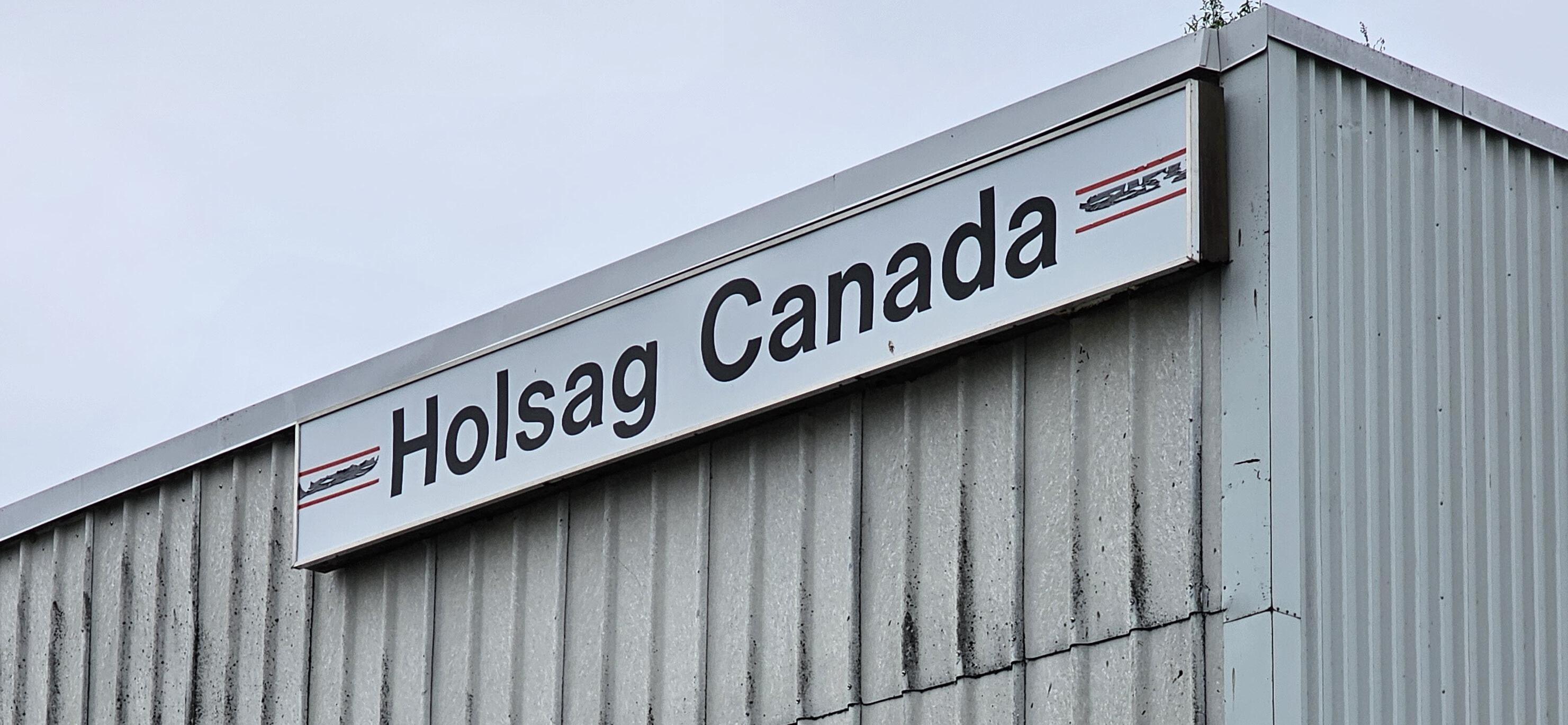
By Robyn Best
Holsag manufacturing is shutting down its Lindsay plant in March due to tariff pressure from the United States.
This comes after a plant-wide meeting on Oct. 16 where it was announced the company’s furniture-making operations will be moving to Utah, where its parent company is located. The Lindsay plant has been open since 1990 and has worked to serve customers across Canada and into the United States.
The CEO of the company visited from Utah to make the announcement.
“We had no idea he was coming up and he said that they’re moving our entire company from Canada to Utah,” said an employee of Holsag. He agreed to speak to the Advocate on the condition of anonymity.
“We were all blindsided,” he said, noting that “people were crying, people were angry.”
Tariffs “are going up to 30 per cent, and they (apparently) can’t afford that,” the employee said.
In October U.S President Donald Trump imposed 24 per cent tariffs on imports of kitchen cabinets, vanities and upholstered furniture as well as a 10 per cent tariff on lumber. That will increase to 50 per cent for cabinets and vanities, and 30 per cent for upholstery in January.
Canada sent about $545 million of upholstered furniture and around $600 million worth of kitchen cabinets to the United States in 2024, according to U.S. customs data.
“This is an unfortunate loss of a long-standing business and jobs for people in our community and region,” said Kawartha Lakes Mayor Doug Elmslie. “We’re feeling the impact of tariffs locally and will continue to work with our businesses to help them access different supports. We’re

working with our provincial and federal governments in efforts to make the Canadian, Ontario, and Kawartha Lakes economy resilient.
Employing approximately 130 employees, Holsag proudly describes itself on its website as a “trusted Ontario manufacturer.” This strong Canadian identity is part of the reason why employees are stunned by the company’s decision to relocate to the United States.
The employee said that the temporary workers have already been laid off, full time employees will be offered some sort of package, and part timers will not be receiving anything.
“We want to keep jobs in Lindsay,” the employee said, acknowledging that “a lot of families are going to be hurt.”
In 2017 Holsag was bought by MITY Inc., a Utah based manufacturer of furniture. The acquisition was aimed at expanding MITY’s footprint and product ca

According to its website, it was originally founded as Holsag Europe in 1960. Holsag Canada has been operating a privately owned manufacturing plant in Lindsay, Ontario since 1990, sourcing wood from “the finest grown, and 100% sustainable, European Beechwood forests in Europe.”










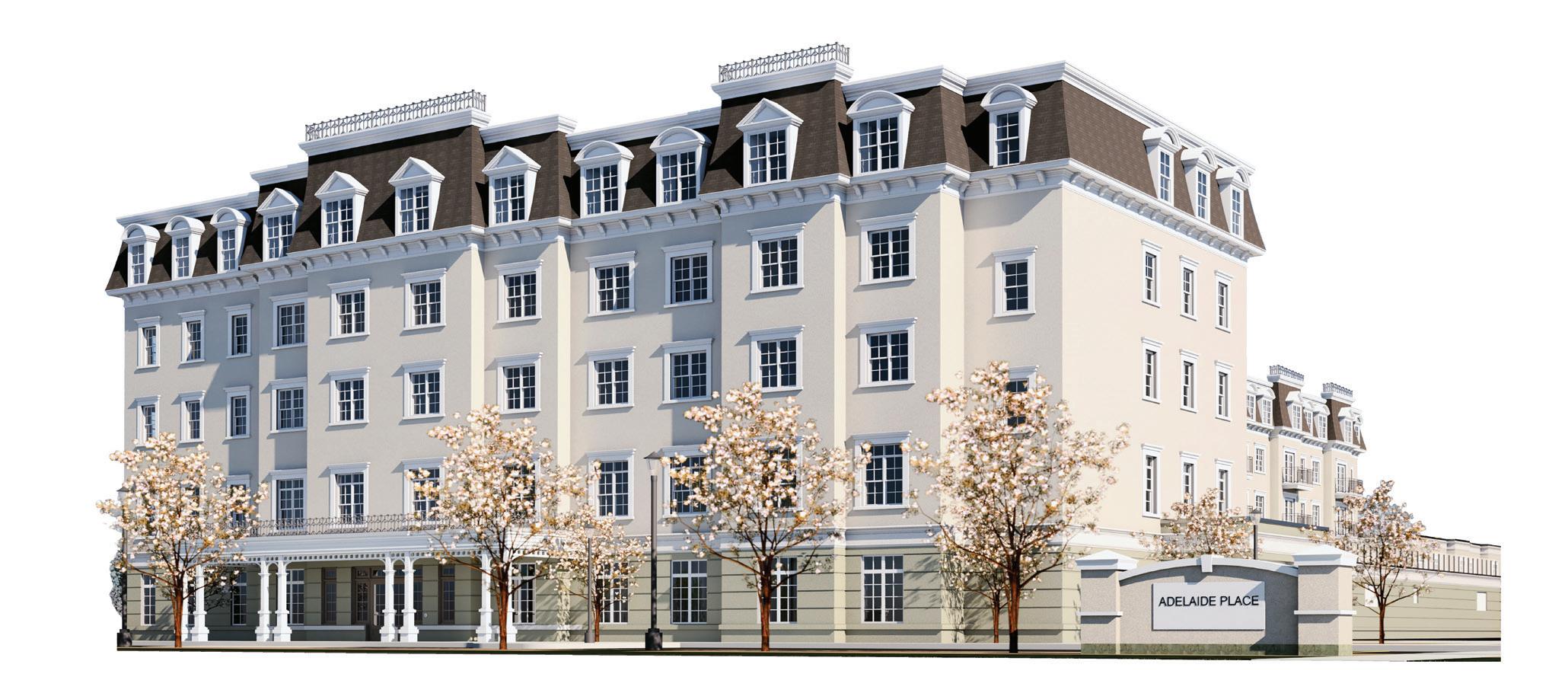















When Amanda Mitchell opened her café Sprinkles n’ Things in Bethany in 2017, it started as a cake business after she had received a good number of requests for orders.
“After about a year of requests, I thought I’d better start learning. I got into offering cakes, and the business eventually turned into pretty much full-time cakes, and I still did some workshops,” she said.
“I knew I wanted to do something to offer to the public, so that’s when I transitioned the cake business into the café,” Mitchell said.
“I went with Sprinkles n’ Things because it can be forever changing as the business grows,” she said, not wanting to have a name that promises anything in particular.
By Robyn Best
Now the business has recently expanded, with a new location that recently opened in Omemee. “When we found this place, I jumped on it because I love the space.”
Since their arrival, neighbouring businesses have shown enthusiastic support by offering to display lawn signs promoting the new store. One even went the extra mile by putting up a billboard to warmly welcome them to the community. “People have been so supportive. Even the local businesses have been so encouraging and welcoming,” Mitchell said.
opening across the street, new menu items will be coming soon.
“We already have protein shakes, but we’ll also offer some pre-workout shots,” Mitchell said.
The shop also offers some classes, such as teaching kids how to decorate cupcakes. “They get six cupcakes each, and then I do a decorating lesson. And we do a little bit of food safety.”
Mitchell has hopes to expand the business even further by opening up more locations across Kawartha Lakes. “Any location we open will all have the same vibe, the same colour,” she said, referring to the teal and pink colour scheme used on the store’s signage and interior.
The café sells a variety of items from baked goods like cupcakes to sandwiches, salads, ice cream, and more. There’s something on the menu for everyone, she says. And with a new gym LA
“We plan on doing a patio next year,” Mitchell said, hoping to make the café as welcoming as possible.


Kindred
It’s clear that Lindsay is growing – and fast. Kawartha Lakes as a whole is experiencing strong growth, but nowhere is that more evident than in its largest centre.
The Advocate has been writing about the ramifications of this on a regular basis, ever since 2023 when Mayor Doug Elmslie said that Lindsay’s population could double within 10 to 15 years.
There are clear indicators of that rapid development already, from more cars on the road and huge new neighbourhoods on the edges of Lindsay.
The Advocate and Kindred Coffee Bar are hosting a free event on Wednesday Nov. 5 called Small Town, Big Dreams, with Mayor Doug Elmslie and CAO Ron Taylor. The two will talk about the opportunities and challenges that lie ahead.
Moderated by Advocate Publisher Roderick Benns and Kindred Co-owner Dara Bergeron, they will have a guided discussion with the mayor and CAO, including taking questions from audience members. This is the public’s chance to ask the mayor and CAO questions about how the city is preparing for so many more people.
“I grew up here so I remember what Lindsay was like long ago – the small town that it once was,” says Benns. “So I know this rapid growth might be challenging for some people. But honestly, I am excited for what lies ahead.”
For Bergeron, who settled here in 2018, she believes she sees a clear opportunity.
“Especially since the pandemic, I’ve noticed incredible growth around us. I am excited to see more economic and cultural diversity. I, too, am a newcomer and I’m hopeful we will meet the demand for immigration to our beautiful area with tolerance and foresight to the infrastructure needs that immigration will create.”
The evening event will be held from 6:30-8 p.m. Come early to grab a Kindred beverage. The evening is sponsored by The Riley Divorce & Family Law Firm.



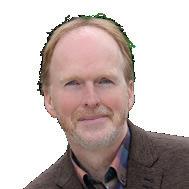





In the face of global economic challenges, October was filled with events and celebrations showing the resilience of our local businesses and entrepreneurs.
Alongside Small Business Week activities in late October, it was also Manufacturing Month – not to mention the inaugural Kawarthas Northumberland Regional Tourism Summit, presented by Regional Tourism Organization 8. With the theme “Stronger Together: Shaping the Future of Rural Tourism,” the summit explored collaboration, sustainability, and the future of regional travel experiences.
As our small business owners and entrepreneurs gathered, they learned about AI, marketing, and starting strong. They

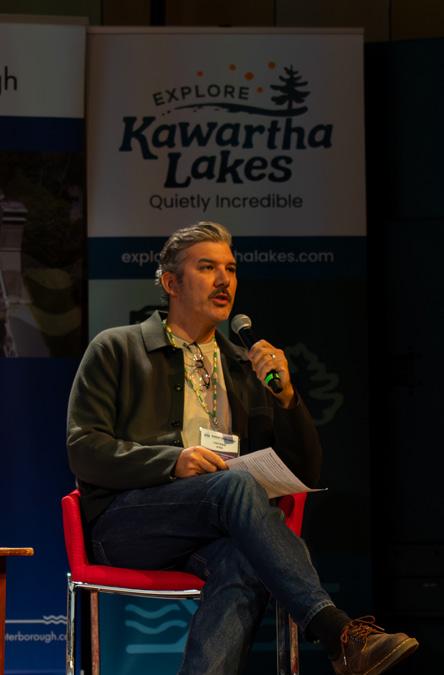
shared stories of what makes Kawartha Lakes a great place to own and operate a business. This is a community where everyone jumps in and invests in each other. The intersections between small business, manufacturing and tourism showed the creativity, innovation and resilience that we know makes Kawartha Lakes a place where ideas can grow and thrive.
If you’re in business, or thinking about starting a business, reach out to us and we’ll help connect you to organizations who can help.
— Rebecca Mustard, Manager, Economic Development, Kawartha Lakes


By Sarah Fournier Contributor
For most of my life, Remembrance Day meant a poppy on my jacket and a moment of silence. I understood the importance of honouring those who served, but I didn’t really grasp the depth of what that meant until I joined a military family.
My husband grew up on bases across Canada, living in (almost) every province with a three-year stint in Europe during his teen years before finally settling in Ottawa. His father served for more than 40 years in the Canadian Armed Forces, commanding tanks, moving from posting to posting, and supporting his family along the way. My husband tried (twice) to enlist, but a bad back prevented him from following in those same footsteps as most of the men in his family. Still, each Nov. 11, he took the morning off work to attend ceremonies. For him, remembrance wasn’t symbolic; it was personal, intensely important, and a necessary display of respect for the service men and women of the past, present, and future.
But it wasn’t until I attended my father-in-law’s retirement, aptly referred to in the military as a Departure with Dignity, that I began to understand the full meaning of service. The ceremony was full of tradition, peppered with deep camaraderie from the families he served alongside. They spoke of his years of dedication, his leadership, and the many moves that shaped a lifetime of commitment. But what surprised me most was that they honoured my mother-in-law’s service to the same degree.
They thanked her for every sacrifice made in silence. For putting aside her own career aspirations to relocate every few years, for rebuilding new homes and communities each time, and for holding down the fort through long deployments and endless transitions. They recognized her service as inseparable from his.
But what surprised me most was that they honoured my mother-in-law’s service to the same degree.
At the time, I was struck by how unusual it felt to see someone thanked for love, patience, and endurance instead of medals or missions. But upon reflection it makes perfect sense. Service doesn’t exist in isolation. It ripples through families, through spouses who keep the home steady, and through children who adapt to every new base and school, perpetually the “new kid” in class.
This November, as we take our moments of silence, I’ll be thinking not only of those who fought and fell, but of the quiet strength of those who stood beside them. The ones who moved, waited, and carried on — often unseen, but never unimportant. Because remembrance isn’t only about looking back on battles. It’s about respecting the many forms of service that have shaped our country, including those who serve, simply by loving someone who does.

Limitless creative for $250 / Month.
branding. graphic design. website. marketing. social. ai. colourandcode.ca

More than a third of Canadians aged 15-49 said they have no plans to have children
By Robyn Best
In the old days they said children should be seen and not heard. But what if a more common choice now is whether to have children in the first place?
Choosing to remain childfree is a choice more people are making. It’s reflected in falling fertility rates and recent reporting that links decisions about parenthood to economic pressures and climate anxiety.
The notion that women are expected to have children is still prevalent today. Whether it’s young adults being asked when they’ll begin trying for a baby, or parents of one child being nudged about adding another to the family, the pressure to start or expand a family continues to reflect this historical norm.
However, recent data from Statistics Canada shows an increasing number of Canadians are choosing not to have children at all, due to a wide range of factors. In 2022, a full 34 per cent of those aged 15-49 said they have no plans to have children.
As well, the birth rate is continuing to drop. In 1851, the birth rate was 6.6 children per woman in Canada. During the years of the baby boom, the average was closer to four children per family; today that rate sits at 1.26 children per woman, a marked decline.
Compared to rest of the world, Canada ranks 186 out of 228 countries based on birth rate data collected by the CIA in 2024.
And while it is a trend seen increasingly often in young people, they aren’t the only demographic who have made this choice.
Lindsay-area couple Catherine McNeely, 62, and her husband Chris Sloan, 52, never planned on having kids, and have no regrets about following through on that decision.
“I never wanted to have children. I come from a family of four children. I babysat from the time I was 15. I’ve always been around kids, but I knew I never wanted to have my own,” McNeely said.
The couple feel they haven’t missed out on much, being close to their extended family and sharing their hearts with their cats. “As aunt and uncle, we had the opportunity to be part of a loving family and be part of children’s upbringing,” McNeely said, who is a former English-as-a-Second-Language teacher and now works in the not-for-profit sector. Sloan works for a public service union.
“It’s important for children to see that it’s not just your mom and dad. There really is a village that’s needed, and everyone plays a different role,” she added.
“If I want to book a trip next week to go somewhere, I’m going to do that. Or if I want to stay over at a friend’s house because I had too much wine, I’m going to do that.”

McNeely said when people find out she doesn’t have kids, she’s faced with pitiful looks.
“There’s just a nanosecond of ‘oh, you couldn’t,’” she said. The assumption from others is never that she’s chosen not to have kids, it’s that you couldn’t, “or they died.”
Georgia McIntosh, 28, who also lives in Kawartha Lakes similarly has always known she doesn’t want kids and has found herself having to explain why she’s made this choice. The single woman says “you get married, and kids are the next (assumed) thing. People expect that,” she said.
For her, part of the reason comes from her career as a social worker. “I see a lot of youth in addiction and homelessness. I could not fathom having a child fall into that. At the end of the day, you can be the best parent possible, and do all the right things, and there’s no guarantee that they’re going to be okay,” she said.
In 1851, the birth rate was 6.56 children per woman in Canada. During the years of the baby boom, the average was closer to four children per family; today that rate sits at 1.26 children per woman, a marked decline.
Local resident Joan Abernethy, 76, is a retired teacher and saw some of those same situations that McIntosh has in the kids she taught. “I worked with kids, but I saw a lot of injustice and a lot of family violence.”
Born four years after the Second World War, Abernethy lived at a time when families tended to be big. When she was a young child, she always told her family she was going to have 12 kids. “By the time I was 10, I remember really re-thinking that, and thinking that I wasn’t ever going to be a parent,” she said.
For Abernethy, there wasn’t any particular reason she decided not to have kids. “I’ve always felt like my DNA is just not that important. It doesn’t need to be replicated.”
Being single has led McIntosh to hear comments from many people in her life. “They say, ‘you’re single, so you don’t know. You haven’t found the person who would make you change your mind.’” But for her, her mind is made up. “Something pretty drastic would have to happen for me to change my mind.”
For her, it seems people can’t fathom someone choosing to remain childless. “People are so appalled…when you say you don’t want kids, like something’s wrong with that. I think there’s such a stigma around it.”
Abernethy never received much judgment from her family but has from other people. “People think you’re selfish and you’re cold,” she said.
She even had one doctor tell her, ‘just go and get pregnant with anybody,’ telling her that her biological clock was starting to run out. Abernethy was faced with the idea that kids were a need. “Life is meaningful no matter what your situation is,” she said, feeling like she hasn’t missed out on anything without having kids.
McIntosh agrees with this statement. “It just doesn’t appeal to me, but I mean, power to the people who do it. I have friends who have babies, and I absolutely adore them, but it doesn’t really fit my lifestyle.” With plans to climb up in her career and travel, for her a child would get in the way.
“If I want to book a trip next week to go somewhere, I’m going to do that. Or if I want to stay over at a friend’s house because I had too much wine, I’m going to do that,” McIntosh said, highlighting how these freedoms are easier for her to enjoy without the responsibilities of parenting.
“Maybe some people see it as selfish, but I don’t want to lose those things by having a child. I have such huge career goals. I don’t want to wait until I’m 40 or 50 to go after those goals.”
“Maybe some people see it as selfish, but I don’t want to lose those things by having a child,” she added. “I have such huge career goals. I don’t want to wait until I’m 40 or 50 to go after those goals.”
McIntosh hopes this idea of needing to have kids shifts soon. “I don’t understand this fascination around women having kids, and (how) you need to do it when you’re young,” she said.
In the past, parents needed to have more kids to help with chores. And with an infant mortality rate much worse generations ago, they needed to know at least some of their children would make it into adulthood.
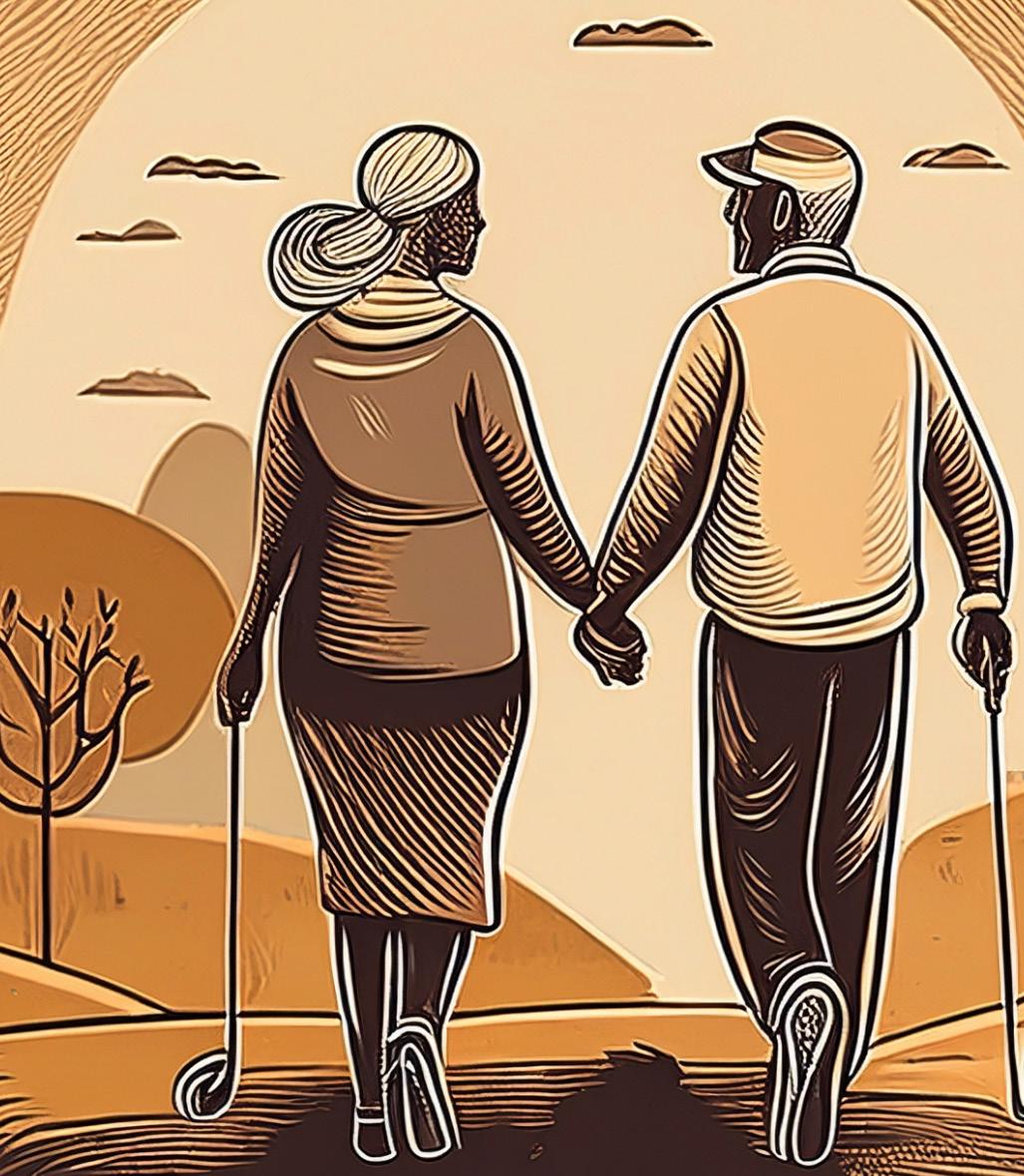
In Empty Planet, Darrell Bricker and John Ibbitson argue that the world will face population decline soon, not overpopulation as earlier predictive models showed. They note that the interrelated causes of declining fertility rates are urbanization, education, women’s liberation, and waning religiosity.
“Among millennials, especially,” Bricker and Ibbitson write, “the fertility rate is very low. Between 2007 and 2012, the birth rate among Americans who came of age after 2000 dropped by 15 per cent, to the lowest birth rate ever recorded in the United States: 0.95, less than one baby for every mother.”
Gen Zed, the generation coming up behind millennials, about 13-28, shows every indication this trend will continue. A 2025 BMO survey reports that 70 per cent of this generation want to have children, but most believe doing so would jeopardize their financial security and so will refrain.
Broader surveys report climate concerns make them less likely to have children, too, with one recent survey finding roughly 40 per cent of Gen Zed respondents reporting that climate concerns reduce their desire to become parents.
McNeely, who cares deeply about the environment, looks at the benefits of not producing nearly as much waste as those with kids do. “We don’t create the amount of garbage we would if we were three or four people,” she said.

“It’s allowed us to have a life where we develop our hobbies and interests.”
Sloan understands the feelings of this younger generation, especially regarding the cost. “It’s an expense to have a kid, and it’s never something we’ve had to worry about,” he said. His wife adds that she is also a type one diabetic “and so pregnancy can be really risky, and I’ve just decided I don’t want to take that risk.”
McIntosh, the social worker, also gets the expense reasoning. She works two jobs and feels as though she is just scraping by. “Life is so expensive now, and I don’t know how people afford it.”
McNeely says that she and her husband have had a fulfilling life. “We didn’t feel like anything was missing. It’s allowed us to have a life where we develop our hobbies and our interests.”
She’s hopeful that with this choice becoming more acceptable, younger women will stop feeling the pressure to have kids. “I think the worst message that young women can get is that you can only be fulfilled if you have a child.”
McNeely has also begun to face the assumption that she has grandchildren. “It’s always ‘do you have grandchildren?’ Not even, do you have kids?”
The couple has also been asked who will take care of them when they get older. “We’ve seen families fall apart. We’ve seen families in serious estrangement,” Sloan pointed out, noting nuclear families aren’t a guarantee of care as one gets older.
As she approaches 30, McIntosh says she has found herself in uncomfortable situations. “You feel like you have to explain to someone why you don’t want (kids), or why you’re not having kids now.”
McNeely and Sloan feel for younger people who are choosing to remain child free. McNeely says that she’s gone through years of people “just feeling sorry for me,” instead of feeling she’s an empowered person who got to choose to live the way she wants.
“There’s nothing wrong with us. We’re not missing anything.” LA










The evolution of the Community Integrated Care Hub for the John Howard Society of the Kawarthas
As the program director of the John Howard Society of the Kawarthas’ Community Integrated Care Hub (the Hub), I have the privilege of witnessing daily the impact that compassionate, integrated supports can have on some of the most vulnerable members of our community. The Hub has always been more than just a building, it is a safe place, a bridge to resources, and a vital piece of our collective response to complex issues like homelessness, substance use, and mental health challenges.
The Hub began as a pilot project funded through federal support, with a focus on providing harm reduction services and education to people in our community. This initial two-year grant allowed us to lay the foundation for meaningful engagement and support. We were fortunate to see the project receive a one-time extension, which enabled us to continue the work until March 31, 2024.
As the door on our successful pilot program closed we were fortunate to have a new one open. The City of Kawartha Lakes approached the John Howard Society to establish a Community Integrated Care Hub, building on the lessons learned from the pilot and expanding the scope of supports. This partnership marked the beginning of a new chapter, bringing together the resources, vision, and community collaboration needed to create a permanent hub.
The Hub initially operated at 22 Peel Street in modest office spaces. Though limited in size and scope, that location be-
came a lifeline for people seeking stability, safety, and connection. Clients came to access resources, receive support, and find non-judgmental care. Staff and volunteers worked tirelessly within those walls, but we knew from the start that the need far outweighed our capacity.
Recognizing the urgency, we began to imagine a larger, more integrated model, one that could meet people where they are and offer wrap-around services under one roof. That vision required both creativity and patience, as 22 Peel Street needed a complete renovation to transform into the permanent, purpose-built home we envisioned.
Since construction began, the Hub has relocated to a temporary site at 50 Mary Street, generously housed within the United Way Haliburton Kawartha Lakes location. This transition is not without its challenges, but it also reveals the depth of partnership and compassion in our community. At Mary Street, the Hub continues to provide essential supports, and the space allows us to maintain our commitment to dignity and accessibility while eagerly preparing for what’s to come.
The future of the Hub at 22 Peel Street is more than a physical expansion, it is a transformation in how we serve. The renovated Hub will be a 24/7 integrated care facility, designed to address the interconnected needs of individuals who are often left behind by traditional systems.
Our new home will include:
• Wrap-around supports: Housing support, addiction and harm reduction services, mental health care, skills development opportunities, and court support. These services will give clients a comprehensive network of care and stability.
• Clinical services: Accessible healthcare, wound care, and mental health support provided in a compassionate, low-barrier environment. These services will help address acute needs while creating pathways to longer-term care.
• Basic needs: Showers, washrooms, clothing, and laundry services, all essential for dignity and wellbeing. Importantly, the new space will also include an overnight program, providing safe sleeping areas for 12–15 individuals who would otherwise be on the street.
• Nutrition and community: A meal program supported by the Social Sustainability Fund and the United Way Haliburton Kawartha Lakes. This partnership ensures that every individual who comes to the Hub can count on a hot, nutritious meal and a welcoming atmosphere that fosters connection.
This entire program has been made possible through generous funding from the city, which has committed to addressing and preventing homelessness in our community. Their support, alongside our many community partners, underscores a shared belief that homelessness and related challenges are not just individual struggles but community-wide issues that require community-wide solutions.
At the John Howard Society, our mission has always been to deliver “effective, just, and humane responses to crime and its causes.” The Community Integrated Care Hub embodies this mission by recognizing that reducing harm, supporting healing, and addressing root causes like poverty, trauma, and lack of housing are critical steps in building safer and healthier communities.
We are deeply committed to person-centred care, meeting people where they are at, without judgment, and tailoring supports to their unique circumstances. This approach allows us to build trust, foster dignity, and create meaningful opportunities for change.
Our organization looks forward to continuing and expanding partnerships with other service providers, working together to address the gaps and barriers that affect the vulnerable population we serve. Collaboration will remain
The Hub will bring JHS services together under one roof for all of Kawartha Lakes to access.

at the heart of our approach, because no single agency can solve these challenges alone.
As we prepare to reopen the permanent location at 22 Peel Street, I am filled with gratitude and optimism. The new Hub will not just respond to urgent needs, it will provide pathways to recovery, healing, and growth. It will stand as a beacon of what is possible when a community chooses compassion and action over stigma and division.
Equally important, we look forward to the opportunity to support the community in ways that positively impact both our housed and unhoused neighbours alike. Homelessness, addiction, and poverty affect us all, directly or indirectly, and when we come together to create solutions, everyone benefits.
The issues we face are not small. But with the opening of the renovated Hub, we are taking a powerful step toward solutions rooted in humanity. Every shower offered, every wound treated, every meal served, every person kept warm, and every conversation held brings us closer to a community where no one is left behind.
Kristal Jones-Craighead is the Community Integrated Care Hub Director, John Howard Society of the Kawarthas





There’s always something new to explore at your local library branch, from engaging events and workshops to exciting new resources.
Join us for an afternoon of reflection and learning with Luke Proctor as he presents “Remembering Together: Canada’s Story Through Service.”
Experience Canada’s military and historical legacy through stories, insights, and conversation. Luke, appearing in uniform, will explore our nation’s journey through service, Confederation, and remembrance. Suitable for all ages.
Lindsay Branch – Downstairs Meeting Room (Elevator access available) Tuesday, Nov. 4, 2025 3:30–5:30 pm
Build confidence in managing your money with free workshops led by Aamir Amla, Financial Professional with AMA Financial Services at the Fenelon Falls Branch.
Building a Financial Foundation: Tuesday, November 4 6:00 pm
Credit & Managing Debt: Tuesday, November 11 6:00 pm
New! Borrow a Royal Ontario Museum (ROM) Community Pass

You can now borrow a ROM Community Pass with your library card and enjoy free admission for up to 4 visitors. Explore exhibits, discover history, and enjoy a day at the ROM free with your library card. Ask branch staff or visit our website for more information.
Explore our newly redesigned website at kawarthalakeslibrary.ca, and discover everything your library has to offer.
by
Joan Corrigan
Some are stymied at 27 Across and 50 Across.
1. * "As ___ as Paddy's pig"
6. Difficult
10. Pasta or bread, informally
14. Reed in "From Here to Eternity"
15. Fancy little sewing case
16. Woodwind instrument
17. Carole King: "But you're ___ away": 2 wds.
18. Judge's gown
19. Fizzy water
20. Grease
21. Liquid breakfasts
23. Allow
25. Flying saucer
26. Home construction site
27. * "It ain't gonna happen!": 3 wds.
33. Arctic knife
34. Cow talk
35. Tilts
39. Movies
42. Sphere; globe
44. Football or tennis
45. "Deck the Halls" refrain
47. Firm up, as Jell-O
49. Long narrow inlet
50. * Skin tone; colouration
54. Non-commercial TV ad: Abbr.
57. Third letter
58. Canadian Dental Assoc'n: Init.
59. Baseball position
63. Monkey
65. Dark and moody film genre
66. Worldwide fashion magazine of French origin
67. * "This little ___ went to market"
70. Bullfight beast
71. Connery who played James Bond
72. A recurring theme or idea
73. Store sign
74. "Auld Lang ___"
75. Sound of sizzling bacon
1. Cards with your name and photo
2. Australian animal, for short
3. Data
4. Escargot
5. Entertaining basketball team, the ___ Globetrotters
6. His-and-___ towels
7. Nuclear particle
8. Erase: 2 wds.
By Joan Corrigan, Fun & Done Crosswords
9. Large-scale mortality events, of animal or plant species: Hyph.
10. Bludgeoning weapon
11. Bubbling rapidly
12. Calgary Stampede, e.g.
13. "Beauty and the ___"
22. Highway taxes
24. "God bless us, every one!" Dickens character
27. Light, flaky pastry
28. Pelvic bones
29. Bird on the beach
30. Oozy stuff
31. Northern Dancer, for one
32. Little dog's bark
36. Edible seaweed
37. Three of a kind
38. Comedy legend, ___ Laurel
40. Road diagram
41. Pie piece
43. London clock, Big ___
46. Seemingly always young
48. Subway and bus lines
Etobicoke to Scarborough
51. Musical mixture of two or more songs
52. Learns to make do
53. Pig-like jungle animals
54. Spotted bean
55. Eavesdrop or pry
56. Ablaze; burning
60. Press clothes
61. Exuberant style
62. "___ and Georgette Magritte with Their Dog After the War" by Paul Simon
64. Psychological selves
68. Driver's navigation aid
69. Agreeable answer









Butternut trees. Red headed woodpeckers. Piping plovers. Cougars. Woodland caribou.
And now, monarch butterflies. All are on endangered or threatened species lists in Canada and Ontario. So is the little redside dace – a minnow that helps us by dining on mosquitoes.
They are threatened by habitat loss from human activities like urban development, road construction, overuse of pesticides, deforestation, disappearing wetlands, invasive species and climate disruption.
They’re not alone. Author and University of Delaware bug expert Doug Tallamy points out we’ve lost 45 per cent of our insects in four decades. And we’ve lost an estimated three billion birds since 1970. A recent report by World Wildlife Fund Canada shows that about half of 910 vertebrate species monitored over the same period are in decline.
In Ontario, 270 plant and animal species are listed as threatened, including some turtles, salamanders, frogs and fish. On its website Ontario Nature points out that “we are facing the largest mass extinction since the disappearance of the dinosaurs.”
All of this is bad news for us. The complex web of diverse plants and animals provides us with air, clean water, a liveable climate, medicines, food, healthy soil and so much more. Its degradation threatens life itself – including ours.
The good news is that our federal government in 2022 signed on to an international biodiversity agreement to conserve 30 per cent of land and waters by 2030. Since then, financial support has gone to nature conservancy groups and some provinces to expand parks and conservation areas.
But there are grave concerns that Bill 5, the Protect Ontario by Unleashing the Economy Act, will seriously undermine those efforts. It allows for “special economic zones” where developers could ignore environmental regulations and local bylaws. Ontario is also replacing its Endangered Species Act
with a much watered-down Species Conservation Act (SCA). Provincial politicians, not wildlife experts, will decide which species get protection. The new act limits that protection to a plant or animal’s immediate nest, den, or root area. That’s like telling us we can’t leave the house to buy groceries.
Once the SCA is in effect, 106 at-risk species will lose all provincial recognition. Their only protection will be the federal Endangered Species Act.
All of this helps pave the way for projects like Highway 413 that cuts across some 132 rivers and streams, hundreds of acres of Greenbelt and farmland, and impacts 29 species at risk –including the redside dace and red headed woodpecker.
Recently, the Ford government also proposed selling to developers 60 per cent of environmentally important shoreline in Wasaga Beach Provincial Park, nesting area of the piping plover. And it redrew the boundary of a protected natural area in Port Hope at a developer’s request.
Concerns are also surfacing about the federal government’s Building Canada Act. Will all this streamlining trample Indigenous and environmental rights?
We don’t need to stop all development, but it needs to be thoughtfully located. Let’s write those letters and call those politicians to tell them that.
A 2024 EKOS poll found four in five Canadians want stronger government action to protect forests and wildlife. And recentlydeceased environmentalist Jane Goodall had been urging quick and urgent action on climate change to protect habitats.
“We’re forgetting that we’re part of the natural world,” she once said. “There’s still a window of time.”

Ginny Colling was passionate about the environment before retiring from teaching college communications students. After retiring she trained with Al Gore’s Climate Reality Project. She has presented to numerous groups about the climate crisis.


It is mid-autumn of 1875, and a golden eagle is soaring over the little town of Lindsay as it wanders about during the annual migratory season. Flying through the late afternoon sky, it may well have encountered flocks of geese and warblers as they made their way south (in numbers many billions more then, than now). With a graceful loop, the eagle turns around and for a few moments points its beak in a northwesterly direction, descending in altitude to get a closer look at the bustling community unfolding below. And what would it have seen? A winding river flanked by busy factories, trains going hither and yon, stately spires, and a grid of tree-lined streets home to a growing population that would work in those factories, ride those trains, and worship in those churches.
All of this was captured on the “Bird’s Eye View of Lindsay, Ontario, Canada,” a map first released 150 years ago and has been sparking curiosity ever since. A large copy hangs in the reference department at the Kawartha Lakes Public Library’s Lindsay branch; it occupies the frontispiece of Bless These Walls (a book about Lindsay’s architectural heritage published in 1982); and reproduction prints are available at the Kawartha Lakes Museum & Archives.
But who was responsible for it, and how did they draw it in an age before aerial photography took off? And what features of the map remain on the ground today, a century and a half after the unnamed artist finished his drawing?
As North America’s towns and cities grew during the late 19th century, Bird’s Eye View maps – properly called panoramic maps – became popular media, and were often used for promotional purposes. Artists would visit a community, drawing pencils in hand, and walk up and down the principal streets making sketches of buildings and other details. Artistic licence might have been taken here and there (e.g. pencilling a boat into the river). These drawings were then copied into a map of the community that was made using isometric projection. The result was a detailed depiction of a town or city, captured in three dimensions on a two-dimensional sheet of paper. There were many talented artists who made this type of work their specialty. Based on striking similarities to other panoramic maps done during the same period, it is all but certain that the individual behind Lindsay’s panorama was an American cartographer named Herman Brosius. Born in Milwaukee, Wisconsin, in 1851, Brosius was well-travelled. While in his early 20s, Brosius spent about six years exploring half a dozen small towns in Ontario – including, it seems, Peterborough and Lindsay. Though he was responsible for nearly 60 Bird’s Eye Views, Brosius was rare-

ly credited on the drawings themselves; the only name on Lindsay’s map is Charles Shober & Co., the Chicago-based firm responsible for printing the map.
Based on contemporary reportage, it seems likely that Brosius appeared in Lindsay towards the end of 1874. “Some time ago we noticed that an artist was taking sketches of Lindsay for the purpose of giving a bird’s eye view of the town,” reported the Canadian Post on Jan. 8, 1875. “Similar maps have been made of Peterboro, Port Hope, Belleville, Kingston, Brockville and other Canadian towns, and have given universal satisfaction,” the Post continued. “The people have liberally supported it, and the Councils in those places have ordered from fifty copies upwards.” (Although the panorama was paid for by subscription, W.A. Goodwin, proprietor of the local art store, placed advertisements in the Post that spring for “The Bird’s Eye View of Lindsay, mounted and framed at the lowest living prices.”)

Much has changed in Lindsay over the past 150 years, of course. Some local landmarks we take for granted today, such as the Academy Theatre, the public library, and the present Presbyterian church, hadn’t been built when Brosius made his trek through town. Others, such as the various riverside mills and factories, have vanished from the landscape entirely, or – like the Needler & Sadler flour mill – have been reduced to ruins. Bond Street between Albert and Adelaide Streets is called Waverly Avenue in the Bird’s Eye View, and much of the east ward has yet to be developed. Meanwhile, a train steams northwestward in the upper right-hand corner of Brosius’ drawing –reminding us of how the railway redeveloped its rightof-way as Lindsay grew. (Those tracks were abandoned in 1907 in favour of a newer route running parallel to Durham Street, and vague traces of the embankment in the map still linger in the backyards of some properties on Orchard Park Road.)
Yet in other cases, time has stood still. The county courthouse (now city hall) and the old jail remain more or less as they were when Brosius drew them for his map, as does Lindsay’s town hall-turned-economic development office. The Albion Hotel at the northwest corner of Kent and Lindsay Streets is now home to various businesses, while the churches of Cambridge Street North continue to welcome worshippers Sunday by Sunday –as they did in 1875.
Herman Brosius died in 1917, but his map remains one of his most enduring artistic legacies.

This “Bird’s Eye View” map of Lindsay was first published 150 years ago. Courtesy of Kawartha Lakes Public Library. LA
Ian McKechnie is a graduate of LCVI, Trent University, and the Ontario Museum Association’s Certificate in Museum Studies program. A freelance writer, local historian, and researcher by trade, Ian has compiled and edited three books.

By Trevor Hutchinson Contributing Editor
Picture a leader that says political opponents should be in jail and that if the police aren’t doing that, they are corrupt. Or a leader who attacks diversity, equity and inclusion policies and subtly creates a sense of otherness by calling supporters ‘good folk.’ Or one that attempts to rouse anger and a sense of victimhood by saying that youth jobs are being stolen by foreign workers or one who takes every opportunity to stoke fear over crime and the failure of the justice system. Such tactics, and others like appealing to a mythical past (‘everything is broken now’), anti-intellectualism and referencing “gatekeepers” or accusing an opponent of using “big words” are all examples of fascism as explained by Jason Stanley in his brilliant book How Fascism Works: The Politics of Us and Them.
It’s what makes Donald Trump and his supporters an existential threat to our very way of life. The above examples sound like Trump but they are just a few examples from the social media of our federal Leader of the Opposition.
To be clear, I am in no way suggesting that Pierre Poilievre is a fascist. According to him that would be calling him a socialist, but I digress.
What I am saying is that his messaging seems to have gone from a negative attack style to one that has many echoes of Donald Trump. And as many commentators noted, a lot of Trump’s communication and indeed actions meet the definition of fascist and authoritarian.
What I am saying is that this style of communication is dangerous. It is sent through the vomit comet of social media and amplified by both extreme groups and malicious state actors who actively seek to have us divided to increase their own strategic position. What I am saying is that you can’t get a genie back in the bottle. We are witnessing scenes south of the border that seemed impossible just 10 years ago. The loss of democracy in what some might call the birthplace of democracy is suddenly a possibility. Stoking the fear and frustration of a group and making them feel like victims is the start of textbook totalitarianism. It’s the thin edge of the wedge.
The loss of democracy in what some might call the birthplace of democracy is suddenly a possibility.
(Trigger warning: offensive content ahead.) You can see this dangerous slide in local online conversations. People are labelled ‘Libtards.’ Entire groups are written off and made ‘other,’ their very existence defined as inconsequential or even dangerous. It starts with people experiencing addiction. But it often extends to residents of public housing. Every criminal act or person released on bail is their fault. Issues of crime, immigration, and mental health are serious topics and demand a vigorous response from all political parties. But the approach and tone of that response are now crucial. The stakes are high. We might not survive us versus them.







MAXWELL MIRACLE moved to Lindsay from Pickering in August 2024.

Lindsay Advocate: Why did you choose to move here?
MAXWELL MIRACLE: I had some job opportunities and moved with family. It was a really nice neighbourhood.
Lindsay Advocate: What is your favourite thing about Kawartha Lakes so far?
MAXWELL MIRACLE: The environment is calm, and my workplace is welcoming.
Lindsay Advocate: What are your favourite local restaurants or shops?
MAXWELL MIRACLE: Food Basics and Chuck’s Roadhouse.
Lindsay Advocate: What do you think is missing from Kawartha Lakes?
MAXWELL MIRACLE: Some important shops like Walmart and Costco.
Lindsay Advocate: How were you involved in your previous community and how might you like to get involved in Kawartha Lakes?
MAXWELL MIRACLE: I was not so involved because I was a student then but I would love to work at the food bank as a volunteer.
Are you new in town? If you moved to Kawartha Lakes within the past two years and want to be featured here, email us at info@lindsayadvocate.ca.
Whether you’ve lived here all your life or are new to Kawartha Lakes, what matters most for you and your family is knowing that the highest quality care is available nearby.
We all count on Ross Memorial Hospital to help us when we need care.
The WE ARE THE ROSS capital campaign is a community effort to raise $25 million to ensure patients in Kawartha Lakes can access the best care close to home.
Your donation will grow our community’s Emergency Department, enhance mental health crisis care, and support more critical projects that are not covered by government funding.
Be the difference this holiday.
Please watch for your Holiday Appeal letter in the mail. You can also contact the RMH Foundation at 705-328-6146, bring your donation in person or donate online at wearetheross.ca
Thank you for your exceptional caring!
